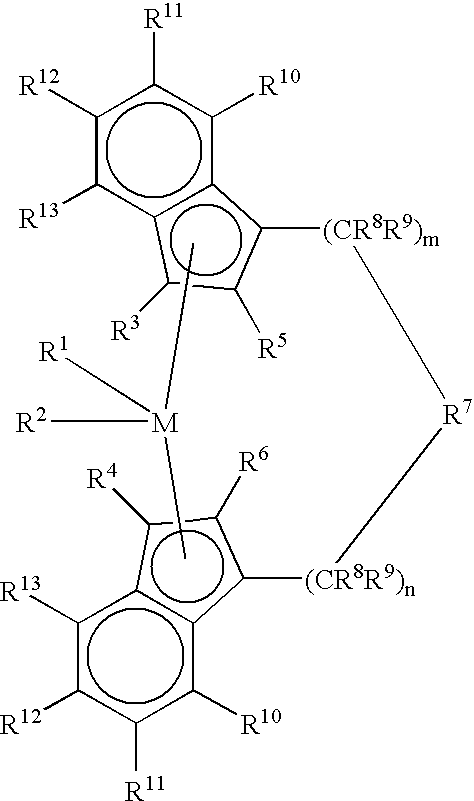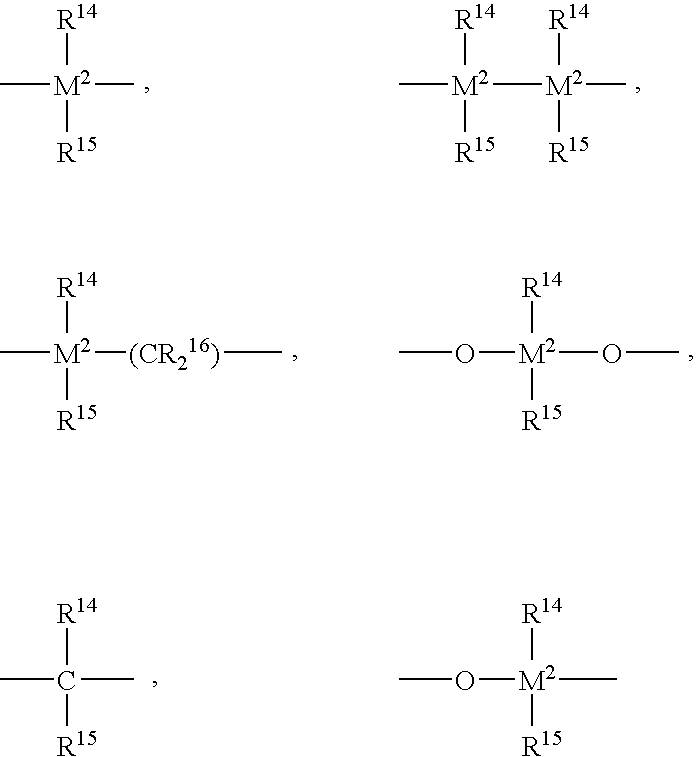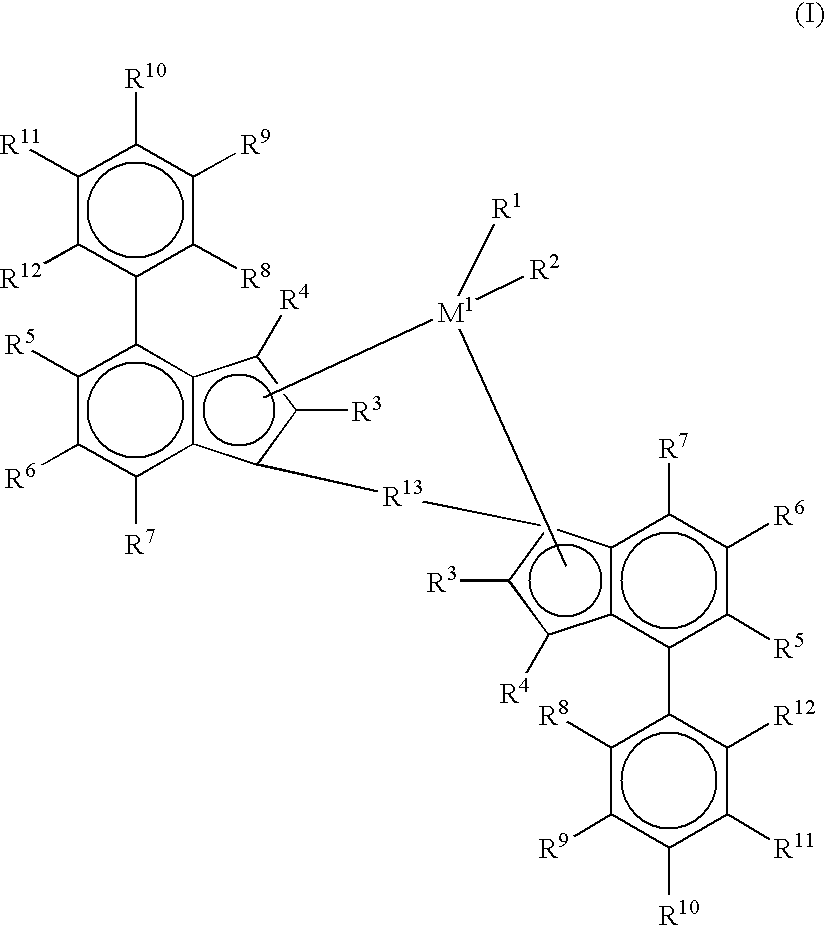Branched crystalline polypropylene
a polypropylene and crystalline technology, applied in the field ofbranched crystalline polypropylene, can solve the problems of poor melt strength of polypropylenes, low draw-down ratios in extrusion coatings, poor bubble formation in extrusion foam materials, etc., to achieve easy control of the desired degree of branching, reduce the number of vinyl chain ends, and achieve product uniformity.
- Summary
- Abstract
- Description
- Claims
- Application Information
AI Technical Summary
Benefits of technology
Problems solved by technology
Method used
Image
Examples
example 1
[0294] In the following example, various samples of polypropylene were formed using mixed metallocene catalyst systems and single metallocene catalyst systems. The properties of the samples are reflected in Table 1.
[0295] Each sample was formed using supported catalysts. The catalysts were supported by placing the metallocene catalyst system in a 100 ml beaker to which a 30 wt % MAO solution was added. The mixture was stirred magnetically for 1 hour and was diluted with 10 grams of toluene. Five grams of Davison MS952 silica pre-calcined at 600.degree. C. were placed in a 250 ml beaker separately. One-fourth of the metallocene mixture was added carefully to the silica and the resulting mixture was stirred manually to achieve homogeneity and uniform color. The rest of the metallocene mixture was then added to the silica as above to achieve a mobile slurry. The entire mixture was transferred to a 250 ml round-bottom flask, and was dried under vacuum. The yield was calculated and the m...
example 2
[0298] In the following example, various samples of polypropylene were formed using mixed metallocene catalyst systems and single metallocene catalyst systems. The properties of the samples are reflected in Table 2.
[0299] Each sample was formed using supported catalysts. The catalysts were supported by placing the metallocene catalyst system in a 100 ml beaker to which a 30 wt % MAO solution was added. The mixture was stirred magnetically for 1 hour and was diluted with 10 grams of toluene. Five grams of Davison MS952 silica pre-calcined at 600.degree. C. were placed in a 250 ml beaker separately. One-fourth of the metallocene mixture was added carefully to the silica and the resulting mixture was stirred manually to achieve homogeneity and uniform color. The rest of the metallocene mixture was then added to the silica as above to achieve a mobile slurry. The entire mixture was transferred to a 250 ml round-bottom flask, and was dried under vacuum. The yield was calculated and the m...
example 3
[0303] In the following example, various samples of polypropylene were formed by mixed metallocene catalyst systems and single metallocene catalyst systems. The properties of the samples are reflected in Table 3. Note the surprisingly high productivities of the mixed metallocene catalyst system.
[0304] Sample 11 is a comparative example of polypropylene made from 0.35 mg of the rac-1,2-ethylenebis(4,7-dimethyl-tetrahydro indenyl)hafnium dichloride (called "Catalyst A") unsupported catalyst, purchased from Boulder Scientific Company. Sample 12 is a comparative example of polypropylene made from 0.35 mg of the rac-1,2-ethylenebis(4,7-dimethyl-i-ndenyl)hafnium dichloride (Catalyst B) unsupported catalyst. Sample 13 is an invention polypropylene made from 0.35 of dimethylsilylbis(2-methyl-4--phenyl indenyl)zirconium dichloride (Catalyst Q) unsupported catalyst. Sample 14 is an invention polypropylene made from 0.175 g of unsupported Catalyst A and 0.35 g of unsupported Catalyst Q. Sample...
PUM
| Property | Measurement | Unit |
|---|---|---|
| weight average molecular weight | aaaaa | aaaaa |
| weight average molecular weight | aaaaa | aaaaa |
| temperature | aaaaa | aaaaa |
Abstract
Description
Claims
Application Information
 Login to View More
Login to View More - R&D
- Intellectual Property
- Life Sciences
- Materials
- Tech Scout
- Unparalleled Data Quality
- Higher Quality Content
- 60% Fewer Hallucinations
Browse by: Latest US Patents, China's latest patents, Technical Efficacy Thesaurus, Application Domain, Technology Topic, Popular Technical Reports.
© 2025 PatSnap. All rights reserved.Legal|Privacy policy|Modern Slavery Act Transparency Statement|Sitemap|About US| Contact US: help@patsnap.com



